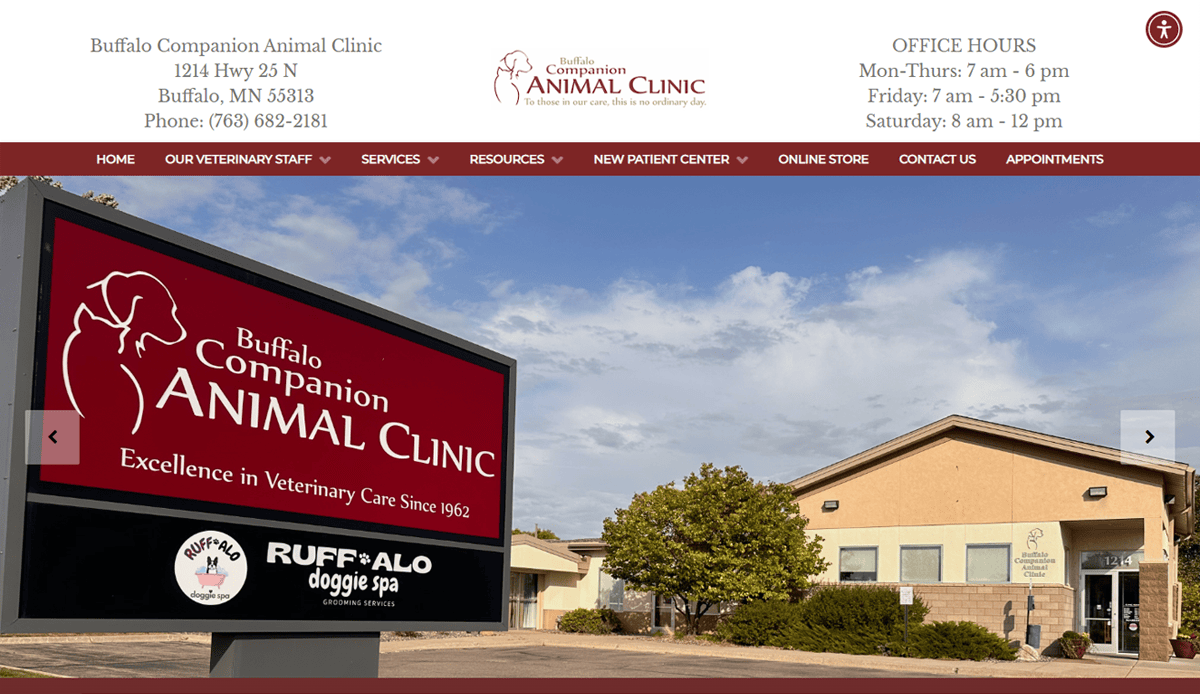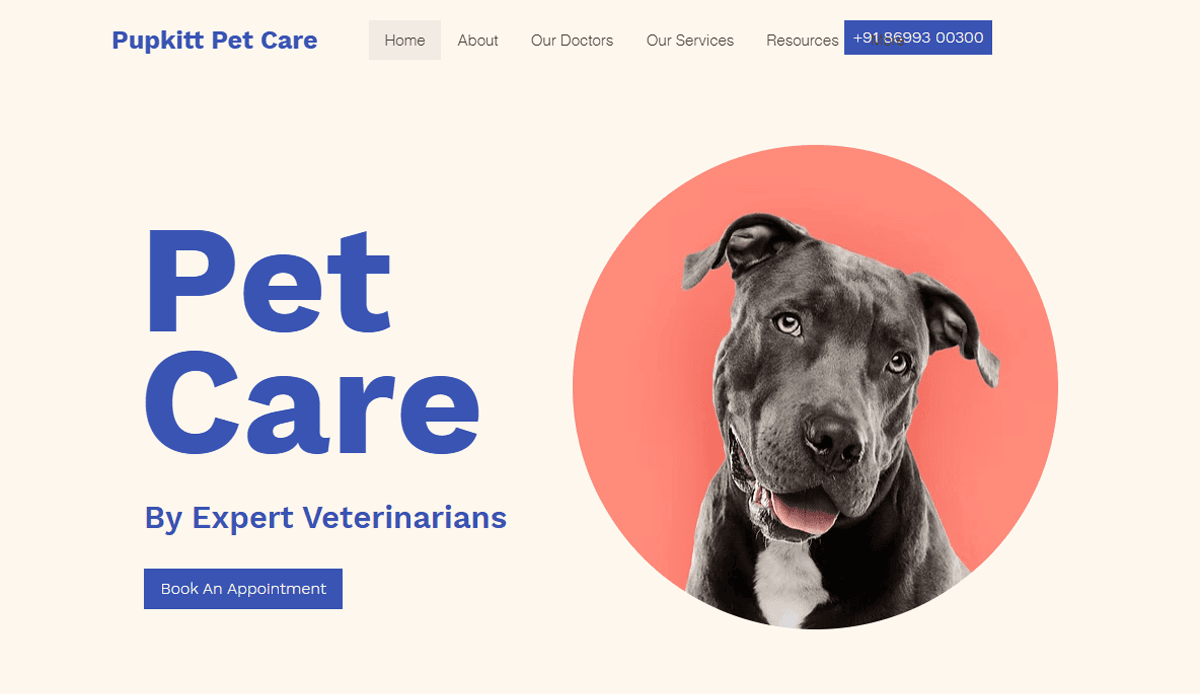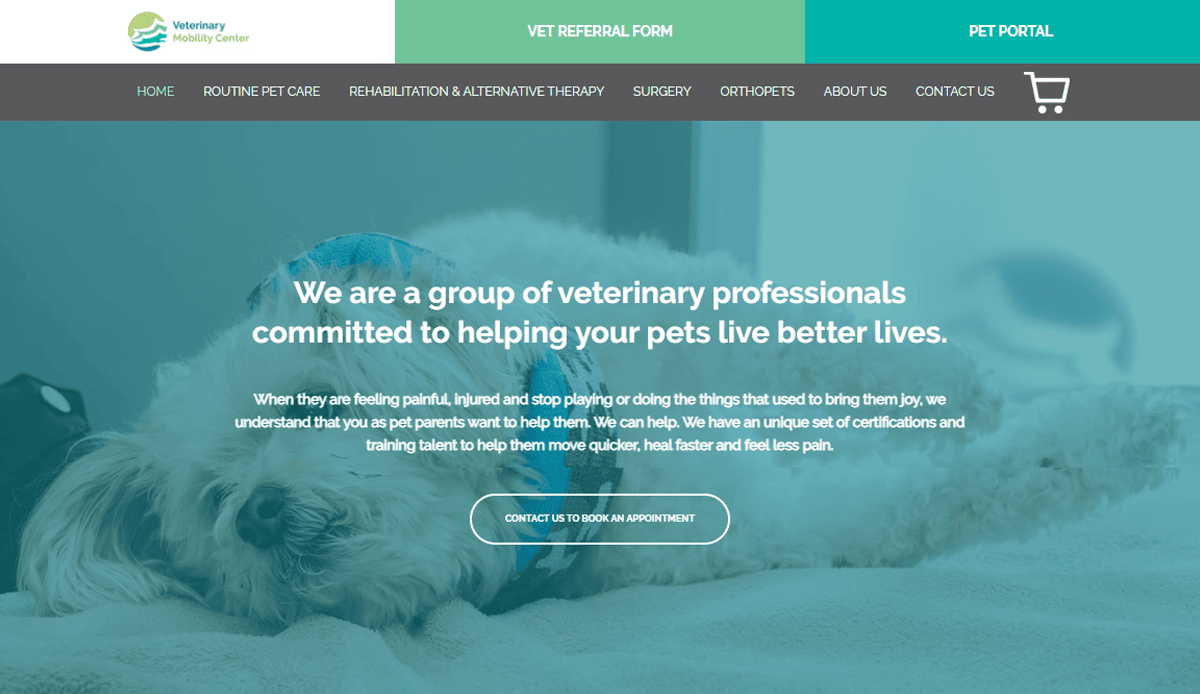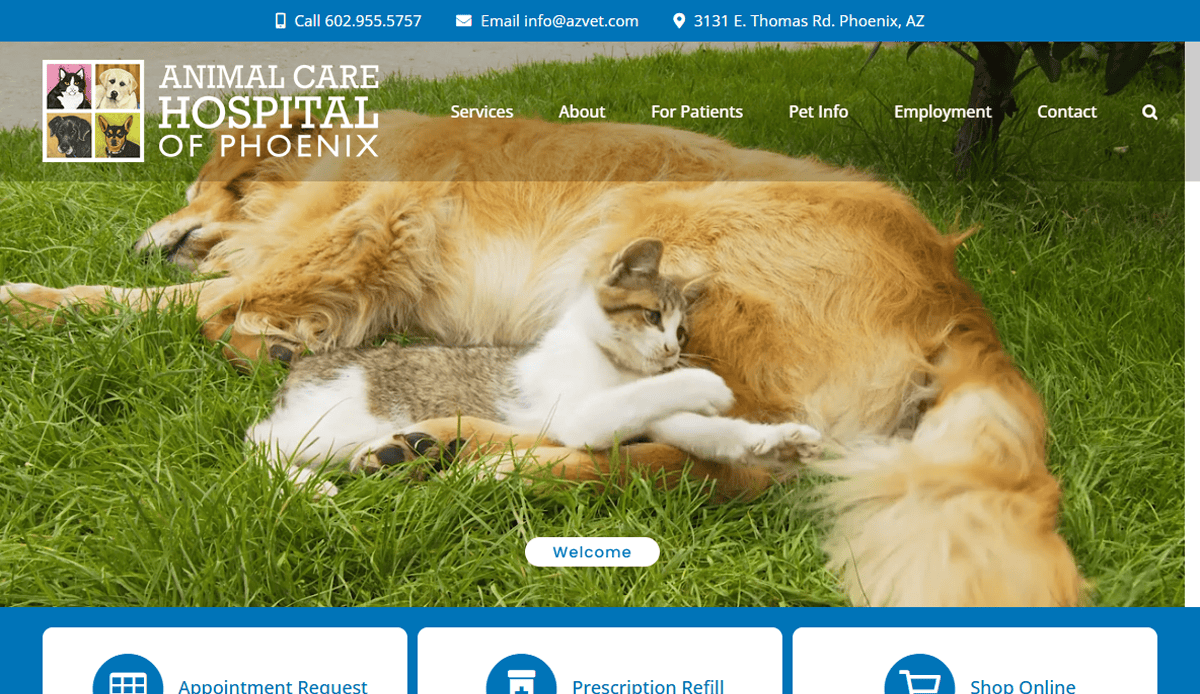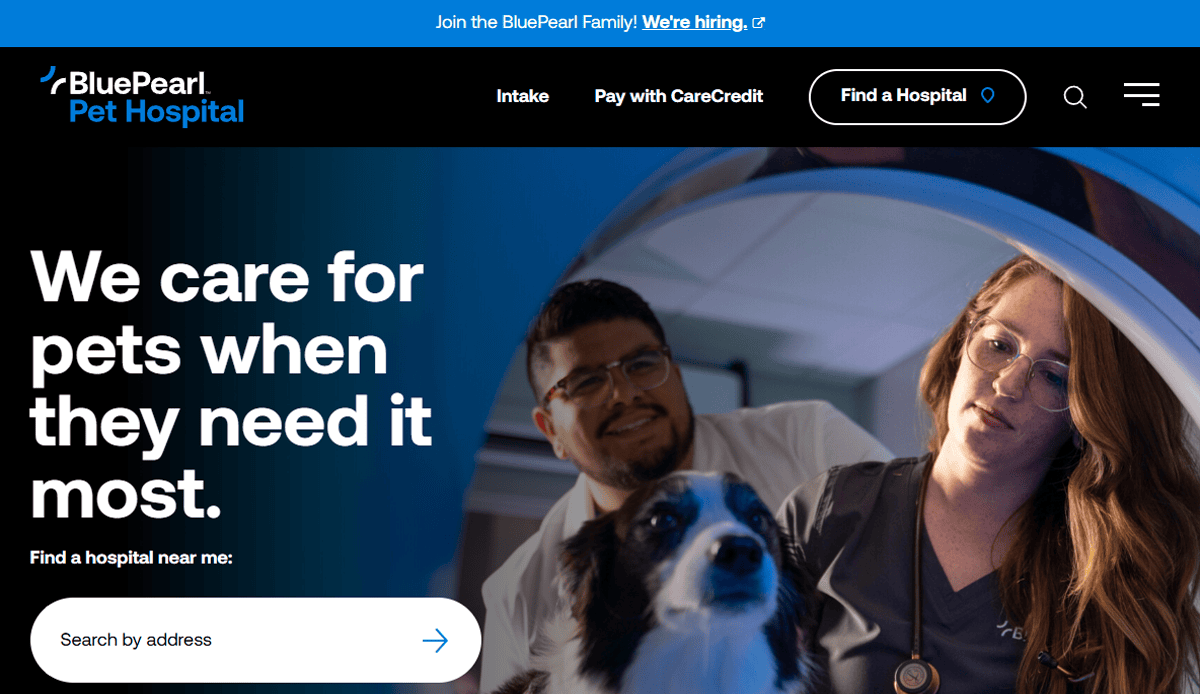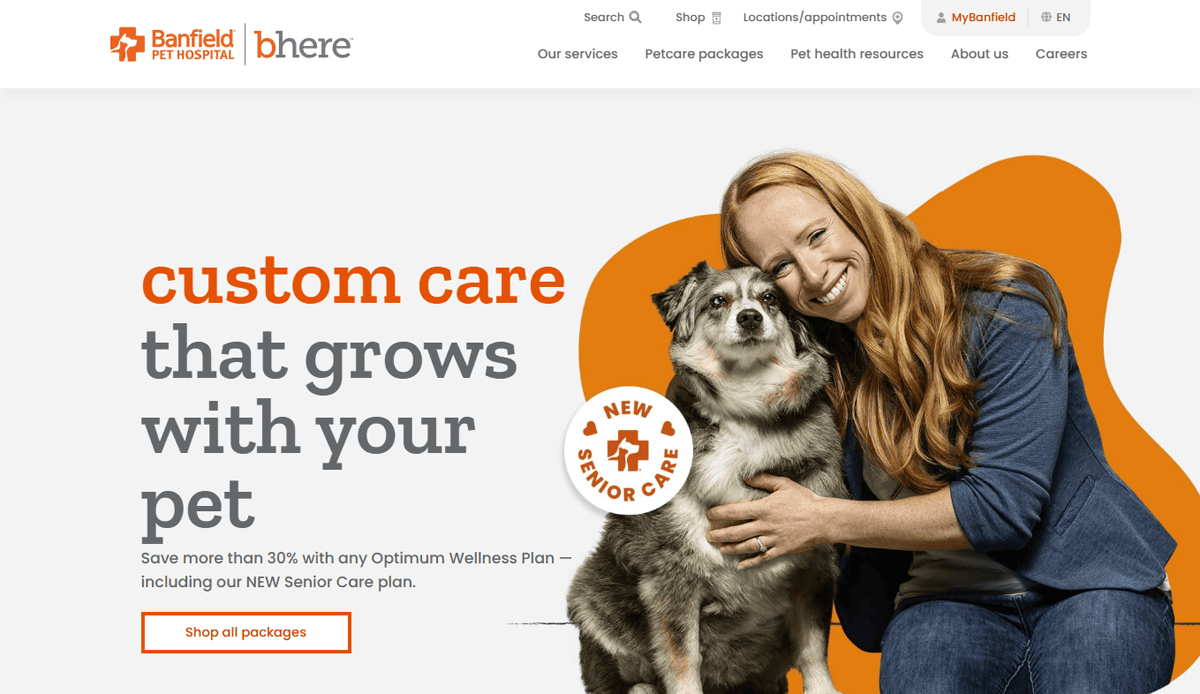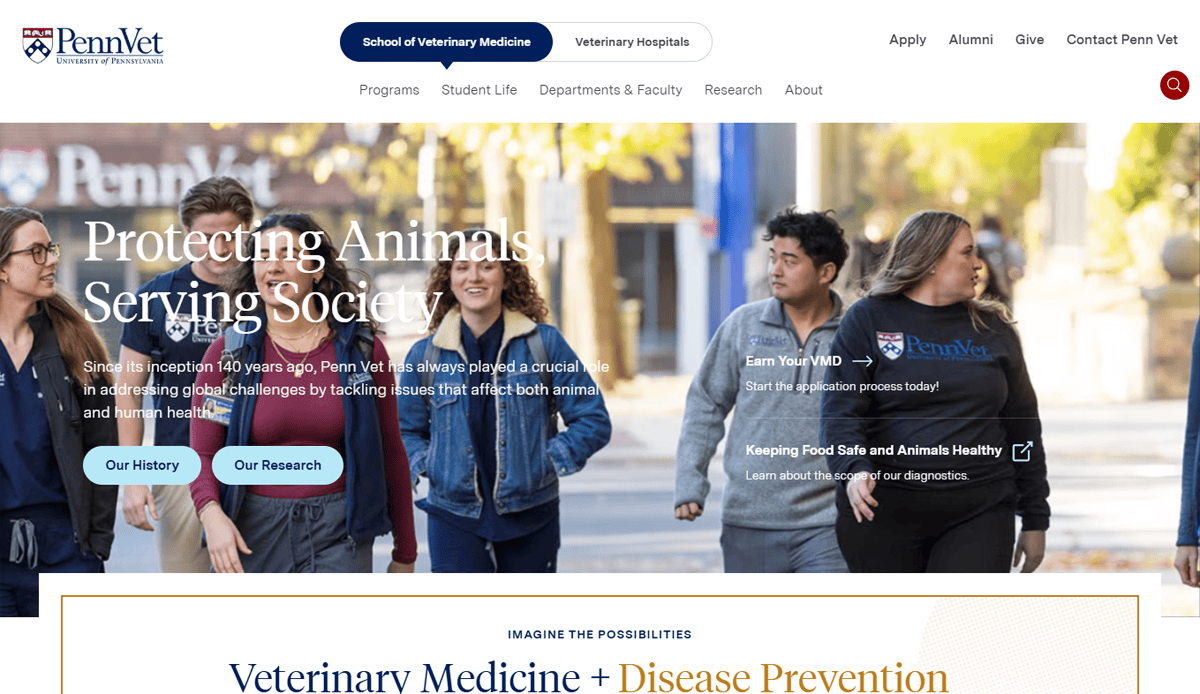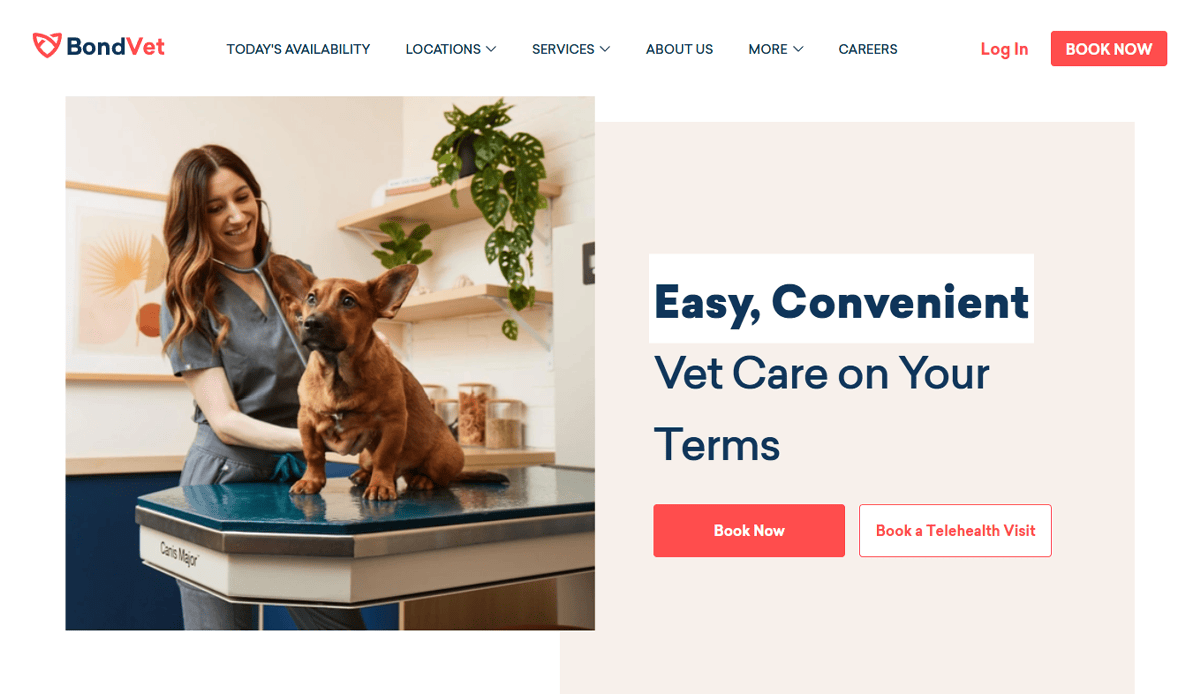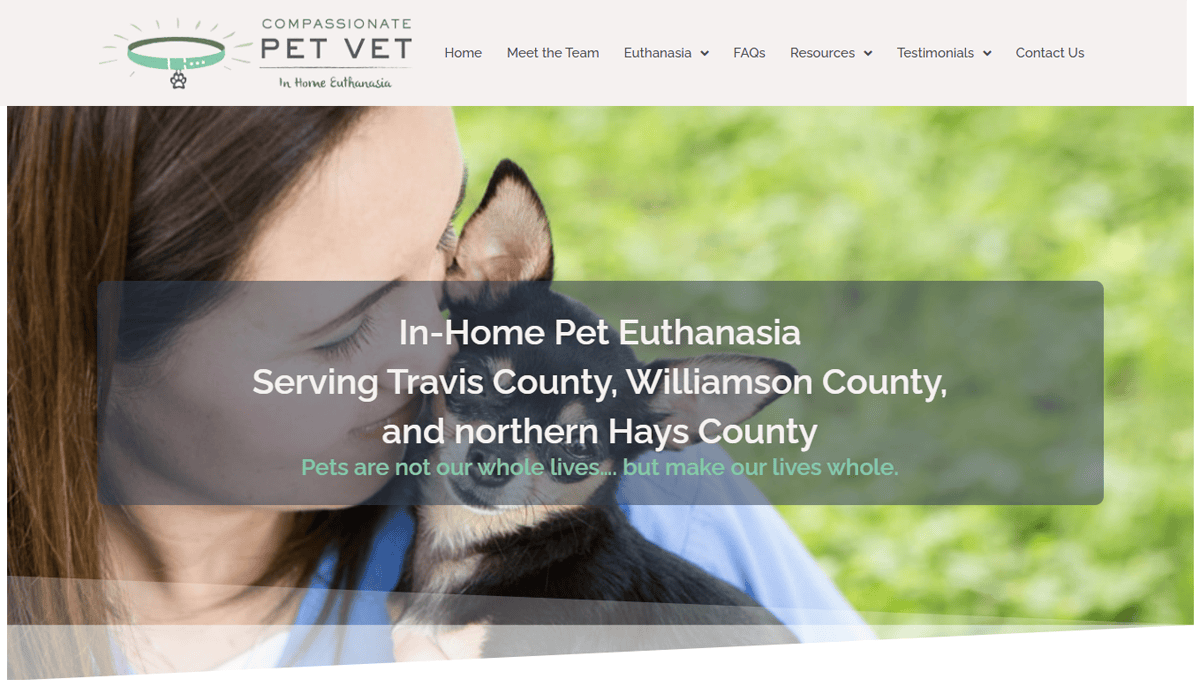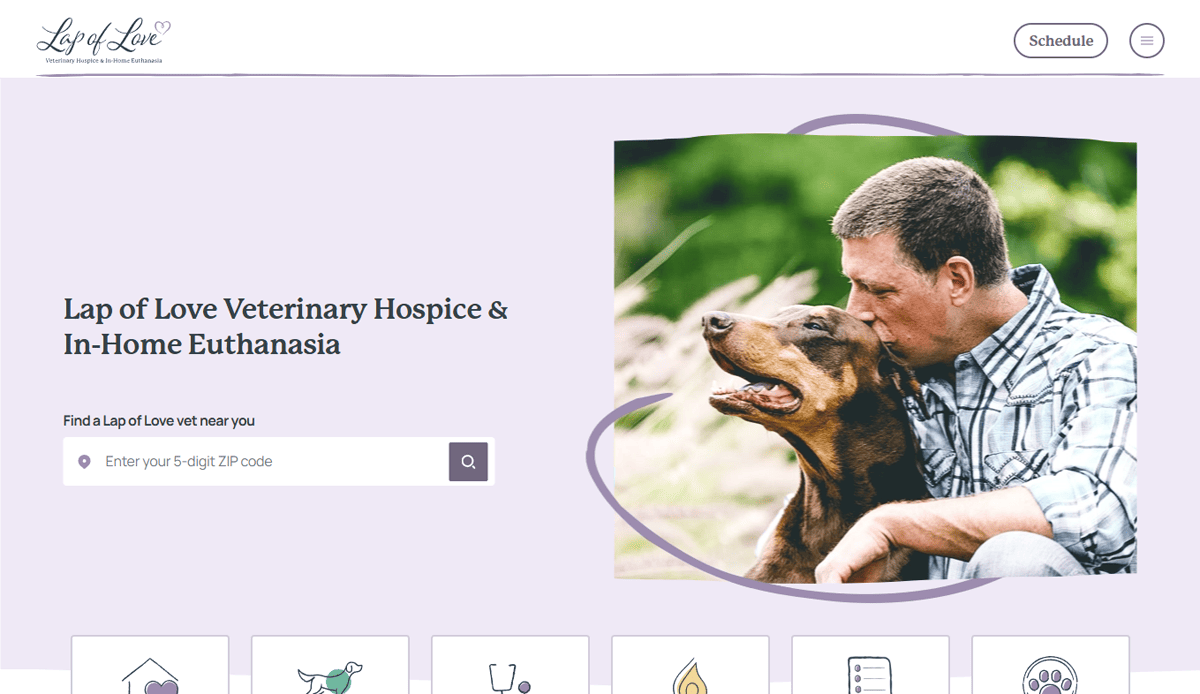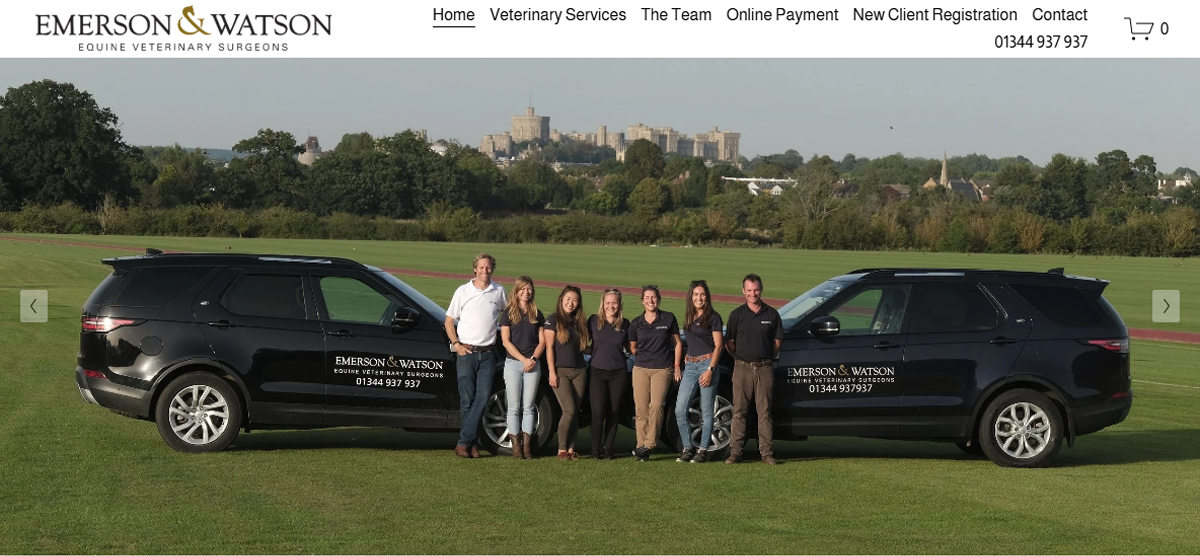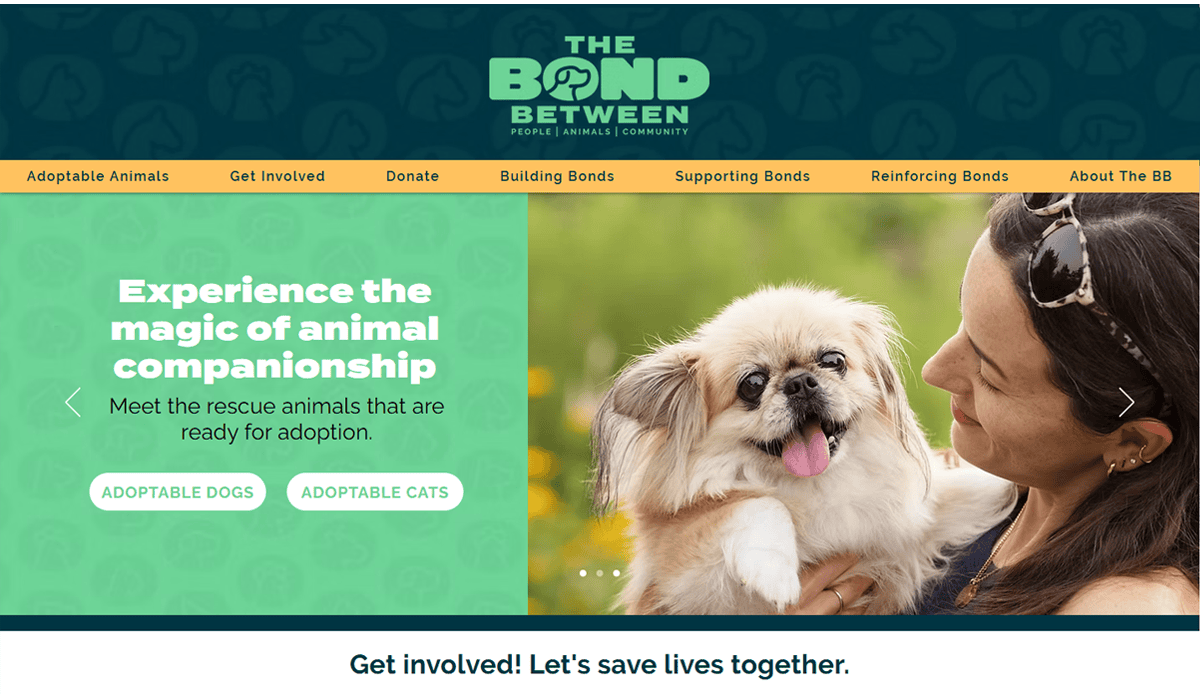Just looking for our Best Pet Care Website examples list?
Why Your Veterinary Website Design Is the Foundation of Practice Growth
If your veterinary clinic’s website feels outdated, generic, or difficult to navigate, you may be losing potential clients before they ever make a call. A pet owner doesn’t just browse your site—they judge your veterinary care quality, professionalism, and reliability within seconds. First impressions matter, and as competitive as the market is today, an exceptional website is not just a luxury—it’s a necessity.
Great website design goes beyond color palettes and logos. It’s about trust. It’s about making sure anxious pet owners can find answers quickly, understand your veterinary services, and confidently book appointments without confusion or friction. Whether they’re searching for “best veterinary clinic near me” or reading up on routine wellness exams, your website needs to serve as both a helpful resource and a conversion tool.
In this guide, we’ll show you how to transform your online presence into a high-performing digital asset. From SEO best practices that elevate your ranking in search engine results to web design strategies that ensure your contact information is always within reach, we’ll walk through everything needed to attract, engage, and retain today’s tech-savvy pet owners.
Whether you’re a seasoned veterinarian or launching a new veterinary practice, the difference between a visitor bouncing or booking often comes down to the structure, speed, and clarity of your site. Let’s explore what separates the best veterinary websites from the rest—and how your practice can build one that truly delivers.
Website Planning & Purpose: Setting the Right Foundation
Before jumping into colors, photos, or page layouts, successful website design starts with a clear plan. The planning phase is where many clinics fall short, often skipping strategy and jumping straight into design. But for a website to deliver a measurable business impact, it must begin with purpose-driven intent tailored to the specific needs of your business.
The first step is defining what success looks like. Do you want to attract new pet owners? Streamline appointment requests? Educate clients about advanced veterinary services? These goals determine everything from your site’s structure to the way content is written. For example, a practice that offers emergency services should prioritize mobile-first booking tools and clearly visible contact information on every page. Meanwhile, a specialty practice may need a robust library of educational resources that highlights its expertise.
Next, consider your audience. Most pet owners visiting your site are either anxious, in a hurry, or looking for reassurance. That’s why intuitive navigation, fast load times, and empathy-driven visuals should be prioritized across the entire site. Every click should move users closer to a decision, whether it’s booking a visit, reading about your veterinarians, or learning more about treatment options.
Also, don’t underestimate the power of aligning your website with broader business goals. If your practice is expanding into telemedicine or promoting new services like dental care or nutrition consultations, your site should reflect those offerings front and center. Planning for future growth helps avoid costly redesigns down the road.
At our top-tier digital marketing agency, we recommend starting every project with a strategic discovery phase. If you’re not sure where to begin, check out our article on the core principles of web design to better understand how foundational decisions influence long-term success.
Planning isn’t just about saving time during development. It’s about ensuring that your website becomes a tool that drives appointments, establishes trust with pet owners, and supports your business’s growth for years to come.
Design Principles That Build Trust and Drive Action
Designing a website is not just about making it look attractive—it’s about creating an experience that guides pet owners, builds confidence in your clinic, and ultimately encourages them to book an appointment. The best websites use a combination of user-friendly layout, emotional cues, and accessibility to deliver results.
One of the most important design principles is clarity. Visitors should instantly understand who you are, what services you offer, and how to get in touch. This means using clean navigation menus, straightforward headings, and scannable content blocks. Avoid clutter or overloading your homepage with too many options—keep the path to booking an appointment or calling the business front and center.
Consistency in branding also plays a key role. From the color palette to the typography and imagery, everything should align with the personality of your business. If your practice is known for being family-friendly and compassionate, visuals should reflect warm, welcoming imagery of your team with pets. On the other hand, specialty or emergency clinics might emphasize professionalism and speed with sleek, high-contrast layouts and urgent callouts.
Accessibility is another critical factor. Many users will visit your site on mobile devices or have varying levels of tech comfort. Your site must be responsive—meaning it adjusts seamlessly across devices—and follow ADA compliance standards. That includes readable fonts, proper contrast, descriptive alt text, and logical page structure. These design elements make your content more inclusive and positively impact your search engine rankings.
Effective website design also leverages visual hierarchy. Use bold headings, whitespace, and contrasting buttons to guide visitors’ attention. Highlight the most important actions, like “Book Appointment” or “Emergency Care,” above the fold, and repeat calls-to-action strategically throughout the entire site.
To see how each of these design decisions fits into the larger process, take a look at our step-by-step guide to the web design process. It breaks down how purposeful design supports better user engagement and stronger conversion rates.
Strong design isn’t just aesthetic—it’s strategic. When every element of your website is built with intent, it helps your clinic stand out, establishes trust with pet owners, and drives measurable growth for your vet practice.
Content & Navigation: Structuring a Website That Converts
When it comes to building an effective website, great content and intuitive navigation are inseparable. Your content must speak directly to the concerns of pet owners, while your navigation should guide them effortlessly to the information they need, especially when time is critical.
Start with a simple, clean navigation bar at the top of your site. Keep the menu limited to 5–7 primary items. Common essentials include Home, Services, About, Resources or Blog, and Contact. Consider adding a prominent “Book Appointment” button that stays fixed as users scroll. For vets offering emergency services, an always-visible emergency contact banner is a smart addition.
Beneath your main navigation, organize secondary pages using logical groupings. For example, group all pet care services under a “Veterinary Services” dropdown. Create individual service pages for treatments like dental care, vaccinations, or surgery. This improves Ux and it boosts your search engine rankings with focused keywords.
Every page should be purpose-driven and helpful. On your homepage, use short intro blocks that link to deeper pages. Avoid walls of text. Instead, use headings, bullet points, and icons to make content easier to digest. Be sure to emphasize your veterinarians’ experience, explain procedures clearly, and answer common pet owner questions with informative FAQs.
Trust-building content should be woven in strategically. Feature client testimonials, bios of your staff with friendly photos, and community involvement. These human elements differentiate your business and reassure visitors they’re in good hands.
Don’t forget your footer—it’s often overlooked but highly valuable. Include links to core pages, social media profiles, emergency contact details, hours of operation, and a brief summary of your clinic’s value proposition. Think of it as a safety net for lost visitors.
The goal is to eliminate friction. If users struggle to find services, can’t locate your contact details, or feel uncertain about what steps to take next, they’ll likely move on. Clear, consistent content paired with intuitive navigation turns your site into a tool that builds trust, drives bookings, and supports your practice’s growth.
Visual Elements: Enhancing User Experience and Brand Connection
In website design, visual elements play a critical role in shaping first impressions and guiding user behavior. They don’t just make a site look appealing—they convey credibility, empathy, and professionalism, often within the first few seconds of a visit. Done well, visuals help reinforce your brand identity and build trust with pet owners.
Start with photography that feels real and local. Avoid sterile stock images that could belong to any clinic. Instead, use high-resolution photos of your actual staff interacting with pets. These images humanize your practice and show the compassionate care that sets your team apart. People want to see who will be caring for their pets, not generic smiles.
Brand consistency is another key element. Your visual style—including your logo, color palette, and typography—should remain uniform throughout the website. Choose calming, approachable colors such as soft blues, greens, or earth tones that reflect the caring nature of staff. Use your logo consistently across the site, and select fonts that are easy to read across all devices and screen sizes.
Visual hierarchy also helps guide user attention. Use size, contrast, and placement strategically to highlight the most important actions and content. Call-to-action buttons like “Book Appointment” or “Call Now” should be clearly visible and stand out from the background. Whitespace isn’t empty space—it’s a design tool that improves readability and reduces visual clutter.
Icons and infographics are effective for breaking down complex information into digestible pieces. For example, use icons to represent your different services or steps in your care process. Infographics can explain procedures, highlight pet care tips, or visualize emergency steps—valuable additions that support SEO and user engagement.
Finally, don’t underestimate the power of video. A short, professionally filmed tour of your practice or a welcome message from your lead veterinarian adds a dynamic, human touch that increases time on site and builds connection. When users can see your team, your facility, and your demeanor, they’re more likely to trust your practice before they ever walk through the door.
Visual elements do more than decorate a page—they build confidence, create clarity, and make your website memorable in a competitive landscape. Every image, icon, and design choice should support your mission: to serve pet owners with clarity, compassion, and care.
Ongoing WordPress Maintenance for Websites
Launching a website is only the beginning. To keep it secure, fast, and functioning properly, ongoing WordPress maintenance is critical, especially for clinics that rely on consistent online visibility and appointment scheduling. Neglecting updates or performance checks can lead to broken features, security vulnerabilities, and lost business opportunities.
WordPress regularly releases core updates, theme enhancements, and plugin patches. These updates are essential for keeping your site stable and protected against new security threats. Vets who handle appointment forms, client records, and contact submissions must ensure that all software stays up to date to prevent data breaches and downtime.
Performance monitoring is another essential maintenance task. Pet owners won’t wait long for a slow-loading site, particularly if they’re trying to find emergency care or look up contact information quickly. Regular speed tests, image optimization, and cache management help your website load faster and deliver a better user experience across all devices.
Backups should be scheduled and stored off-site regularly. If your website is ever compromised or encounters technical issues, a recent backup allows you to restore functionality quickly without disrupting your operations.
Uptime monitoring, broken link scans, and regular testing of contact forms ensure that every part of your website works the way it should. If your “Book Now” button or mobile navigation fails, potential clients may leave before reaching out. Even small glitches can erode trust and reduce conversions.
Veterinary clinics should also consider monthly reporting and analytics reviews. By tracking visitor behavior, keyword performance, and service page traffic, you can continuously refine your site’s structure, content, and design to align with client needs and business goals.
A website is a living digital asset that supports everything from reputation to revenue. Ongoing WordPress maintenance ensures that it remains a secure, optimized, and reliable tool for your practice, day after day, month after month.
Best Vet Website Design Examples
Here are 17 working veterinary practice websites with real URLs and concise insights into what makes each site effective:
1. Buffalo Veterinary Clinic
Location: Buffalo, New York
- Clean, consistent branding that builds professionalism.
- Streamlined navigation enhances user experience.
- Clear descriptions of services and team bios.
2. Pupkitt Pet Care
Location: San Francisco, California
- Bold Earth-tone palette and standout booking CTA.
- Professional imagery and pet-owner testimonials.
- Responsive on mobile for quick appointment booking.
3. Sactown Vet
Location: Sacramento, California
- Intuitive navigation with clear service menu.
- Professional photography creates trust.
- Optimized for mobile usability and speed.
4. Vet Mobility Center
Location: Los Angeles, California
- Mobile-first design ideal for on-the-go pet owners.
- Simple descriptions of services offered.
- Visually engaging pet imagery builds emotional appeal.
5. Aztec Animal Clinic
Location: Phoenix, Arizona
- Consistent brand colors and logo placement.
- User-friendly layout with easy appointment access.
- In-depth service pages improve search visibility.
6. Gaia Vets
Location: Austin, Texas
- Warm homepage with service callouts and booking button.
- Uniform visual style across sections.
- Seamless appointment scheduling process.
7. Animal Care Hospital of Phoenix
Location: Phoenix, Arizona
- Strong brand color usage and clear CTA.
- Emphasizes team and veterinary services upfront.
- Streamlined appointment and contact flow.
8. Chewy Vet Care
Location: Austin, Texas
- Transparent pricing and online scheduling.
- Integrated with Chewy’s ecosystem for continuity.
- Emphasis on user convenience and transparency.
9. BluePearl Specialty & Emergency Pet Hospital
Location: Tampa, Florida
- Highlights specialty and emergency services clearly.
- Professional imagery reinforces Mars-backed reputation.
- Educational content adds depth and trust.
10. Schwarzman Animal Medical Center
Location: New York, New York
- Nonprofit prestige and long history communicated visually.
- Large, clear website structure for ease of use.
- Educational tone aligned with specialist services.
11. Banfield Pet Hospital
Location: Nationwide (HQ Vancouver, WA)
- Consistent brand identity across 1,000+ locations.
- Wellness plans and service info clearly promoted.
- Integration with PetSmart enhances discoverability.
12. New Bolton Center (Penn Vet)
Location: Kennett Square, Pennsylvania
- Educational and equine-specialty design focus.
- Institutional trust via university affiliation.
- Easy navigation to different hospital services.
13. Bond Vet
Location: Multiple U.S. cities
- Clean, modern interface with clear CTAs.
- Prominent header images paired with action prompts.
- Media mentions build social proof.
14. Compassionate Pet Vet
Location: Austin, Texas
- Client-focused messaging with soothing visuals.
- Simple layout eases emotional burden.
- Clear navigation without clutter.
15. Lap of Love Veterinary Hospice
Location: Lutz, Florida
- Empathetic, niche hospice messaging and design.
- Comforting visuals support delicate subject matter.
- Multi-state presence with unified branding.
16. Emerson & Watson Equine
Location: U.K.
- Equine-focused visuals and service clarity.
- Social media and chat are integrated for real-time support.
- Targeted design for horse owners.
17. Secondhand Hounds
Location: Raleigh, North Carolina
- Slider hero imagery with engaging headlines.
- Focused layout for adoption and rescue audiences.
- Clear calls to action for giving and adopting.
Ready to Put Your Veterinary Website to Work?
Your clinic’s website, as its digital front door, has the power to shape how veterinary clients perceive your care, trust your services, and decide to book an appointment. From building trust with visual storytelling to implementing mobile-friendly navigation and SEO best practices, a well-designed veterinary website isn’t just beneficial—it’s essential.
If you’re ready to create a website that resonates with pet owners and helps your veterinary business grow, it’s time to work with experts who understand both design and strategy. Whether you run a neighborhood practice or a full-service veterinary hospital, we’ll help your website serve as a powerful tool that captures more leads and enhances veterinary experiences from the very first click.
Ready to optimize your website and attract more clients? Schedule a free consultation with our expert designers today.
Frequently Asked Questions About Vet Website Design
How can a professional website help my vet practice grow?
A high-quality, professional website for your veterinary practice builds credibility, increases trust, and turns curious visitors into booked appointments. It serves as the first impression for pet owners searching for vet services, offering easy access to the services you offer, location info, and online booking. A well-optimized website can significantly boost traffic to your website and encourage repeat visits to your website by keeping content current and relevant.
What features should every website include?
Every page of your website should be designed to guide visitors through a seamless experience. Key features include mobile responsiveness, clear calls to action, contact and emergency veterinary info, online appointment forms, client testimonials, and detailed service descriptions. For guidance on the full scope, see our complete guide to website design for clinics.
Why is mobile optimization critical?
A mobile-friendly website is essential because most website visitors now browse on smartphones, especially when searching for the nearest emergency vet clinic. An intuitive website layout that works well across all devices helps ensure your website performs well in both user experience and local SEO rankings.
How can I improve SEO for my website?
To help your website rank higher in search results, focus on website design and SEO together. This includes keyword-rich website copy, structured service pages, local schema markup, and internal linking to build topical authority. Check where your website ranks using analytics tools and refine your website for local search to drive more qualified traffic to your site.
What’s the role of design and content in attracting veterinary clients?
Design and content work hand-in-hand to make your website serve both branding and conversion goals. An accessible website with strong visual hierarchy, compelling messaging, and targeted calls to action helps potential clients feel confident in their experiences with your business. Great design also reflects your values as a veterinary professional, whether you’re a general practice or a specialized clinic, or a veterinary hospital.
How often should I update content or add new features?
To maintain a high-performing website for your veterinary business, update it regularly. This includes posting blog content, adding new service pages, implementing the latest design trends, and including updated client testimonials. Review prompts on your website and fresh content also improve your site’s SEO and drive repeat visits.
Should I use a website builder or hire a digital agency?
While a website builder may offer quick setup, it often lacks the customization, SEO depth, and strategy needed for clinical websites. Partnering with a team that understands website design and digital marketing ensures your practice’s website aligns with your growth goals, attracts website visitors from organic search, and delivers a more functional website experience.
Can reviews on my website improve performance?
Yes. Reviews on your veterinary website create trust, support conversion, and provide user-generated content that strengthens SEO. Display them strategically on service pages and homepage sections. Incorporating review prompts on your website encourages satisfied clients to share their positive experiences, enhancing your online presence.
How do I know if my website is underperforming?
If you’re not getting inquiries, notice slow traffic to your website, or see high bounce rates, your site may need improvements. Signs include outdated content, a non-mobile-friendly website, poor layout, or a lack of clarity in your calls to action. Tools like Google Analytics or professional audits can check where your veterinary website is falling short.
What makes a great website for vet practices?
The best website combines form and function. It’s an intuitive website that reflects your brand, showcases the full range of services you offer, and encourages website clicks that lead to conversions. A great website prioritizes user-friendly veterinary design, fast performance, and clear messaging—all tailored to the needs of today’s pet owners who are actively looking for vet services.

